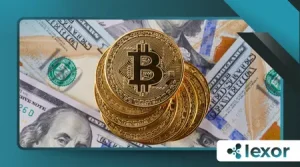What Is a Blockchain Explorer and How to Use It

Understanding What Is a Blockchain Explorer and How to Use It is paramount for anyone navigating the crypto landscape with confidence.
This fundamental tool acts as a transparent window into the typically hidden mechanisms of the distributed ledger technology.
Think of the blockchain itself as an intricate, sprawling digital library where every record is meticulously logged and publicly available.
A blockchain explorer is essentially a sophisticated online search engine designed to fetch, display, and analyze data from a specific blockchain network.
Its core function is to translate the raw, cryptographic data of the chain—hashes and complex code—into an easily understandable format.
This vital utility provides real-time access to the public record of transactions, blocks, wallet addresses, and network metrics.
Why Are Blockchain Explorers So Important for Crypto Transparency?
The entire decentralized promise of blockchain hinges on verifiable transparency, and explorers deliver precisely that.
They empower every user to independently confirm the status and legitimacy of any transaction, effectively removing the need for trust in a centralized authority.
This auditability principle is key to the technology’s security and trustworthiness, making the explorer an indispensable tool. It allows for the real-time monitoring of network health and activity.

How Does a Blockchain Explorer Work to Display Data?
The explorer constantly synchronizes with the nodes of the blockchain network, downloading a copy of the public ledger.
It then indexes this enormous dataset into a searchable database, using powerful server technology.
Read more: How to Introduce Coding to Kids Under 6
When a user enters a search query, like a transaction hash or wallet address, the explorer quickly pulls the corresponding, human-readable data from its index.
This process ensures quick access to up-to-the-minute information.
How Can I Use a Blockchain Explorer in My Daily Crypto Operations?
Learning What Is a Blockchain Explorer and How to Use It starts with mastering the search function.
++Can You Use Crypto in Everyday Life?
You primarily use three types of data identifiers: the transaction hash, the block number/hash, and the wallet address.
Finding your transaction details or checking a smart contract’s code becomes straightforward once you have the unique identifier.
For instance, imagine you’ve sent 2 ETH to a decentralized exchange.
By inputting the transaction hash (TxID) into an Ethereum explorer like Etherscan, you can immediately confirm its status.
Read more: What Is Proof of Work in Cryptocurrency?
You’ll see the exact time it was broadcast, the block number it was included in, the transaction fee (or gas cost), and the confirmation count.
What Key Information Can Be Found on an Explorer?
Explorers showcase a wealth of detailed information that is critical for analysis and verification.
| Data Type | Description |
| Transaction Details | Sender/Receiver addresses, amount, fee paid, timestamp, confirmation count, input/output data. |
| Block Details | Block height, hash, size, timestamp, number of transactions included, and the reward paid to the miner/validator. |
| Wallet Address Data | Current balance, total number of transactions sent and received, and a history of all token holdings. |
| Network Metrics | Real-time hash rate (for Proof-of-Work chains), gas price (for Ethereum), and total supply of the asset. |
What Are the Most Common Use Cases for a Blockchain Explorer?
Beyond simply tracking a payment, explorers facilitate critical auditing and due diligence.
A trader might check a DeFi protocol’s smart contract via the explorer to verify its security before interacting with it.
++How to Use a Blockchain Explorer
For an investor, monitoring the movement of assets from a whale address can provide valuable market insights, a practice known as “on-chain analysis.”
How Do I Check a Transaction’s Confirmation Status?
After initiating a crypto transfer, you want assurance that the funds are moving. Simply paste the transaction hash into the search bar of the relevant explorer.
The result page will display the number of confirmations.
The more confirmations a transaction has, the more secure and immutable it is considered, making the explorer the ultimate arbiter of a successful transfer.
Can I Track Token Movements on a Blockchain Explorer?
Absolutely, and this capability is essential in the world of decentralized finance (DeFi) and NFTs. Explorers allow you to track the flow of specific tokens, not just the native coin of the chain.
For example, on a Solana explorer like Solscan, searching a wallet address reveals a full inventory of all SPL tokens and NFTs held. This transparency is key to the ecosystem’s success.
What Is a Blockchain Explorer and How to Use It for Network Health Analysis?
A significant portion of an explorer’s utility lies in providing comprehensive network statistics. This data allows for a macro-level assessment of the chain’s performance.
Consider this compelling statistic: by late 2024, the total market capitalization of the global blockchain technology market was estimated to have hit $31.3 billion, demonstrating enormous growth.
An explorer reflects this growth through metrics like daily transaction volume and network congestion.
By observing the average gas price on Ethereum, for instance, you can gauge current network demand, helping you decide the optimal time to execute a transaction and avoid unnecessarily high fees.
If you don’t use this tool, are you truly participating in a transparent, decentralized system?
What Is a Blockchain Explorer and How to Use It: Conclusion
What Is a Blockchain Explorer and How to Use It is the question of the moment, marking the transition from novice to competent crypto user.
They remove the reliance on intermediaries, making users the primary auditors of their own digital finance.
Mastering this tool transforms your experience from passively sending funds to actively validating and understanding the distributed ledger you’re using.
Ultimately, a blockchain explorer represents the foundational tenet of blockchain technology: trustless, verifiable transparency for all.
Frequently Asked Questions: What Is a Blockchain Explorer and How to Use It
What is the best blockchain explorer for beginners?
For newcomers, an explorer with a clean, user-friendly interface is ideal.
Etherscan (for Ethereum) and BscScan (for BNB Chain) are widely regarded as industry standards and excellent starting points due to their robust features and accessible design.
Can a blockchain explorer show me the owner of a wallet?
No, blockchain explorers only display the public wallet address and its activity.
The blockchain is pseudonymous, meaning the wallet address is not directly linked to a real-world identity unless the owner has publicly disclosed that information elsewhere.
Are all blockchain explorers the same?
While their core function is identical, explorers differ based on the blockchain they cover and the specific features they offer.
Bitcoin explorers focus on simple transactional data, while Ethereum-based explorers provide detailed smart contract interaction data.
